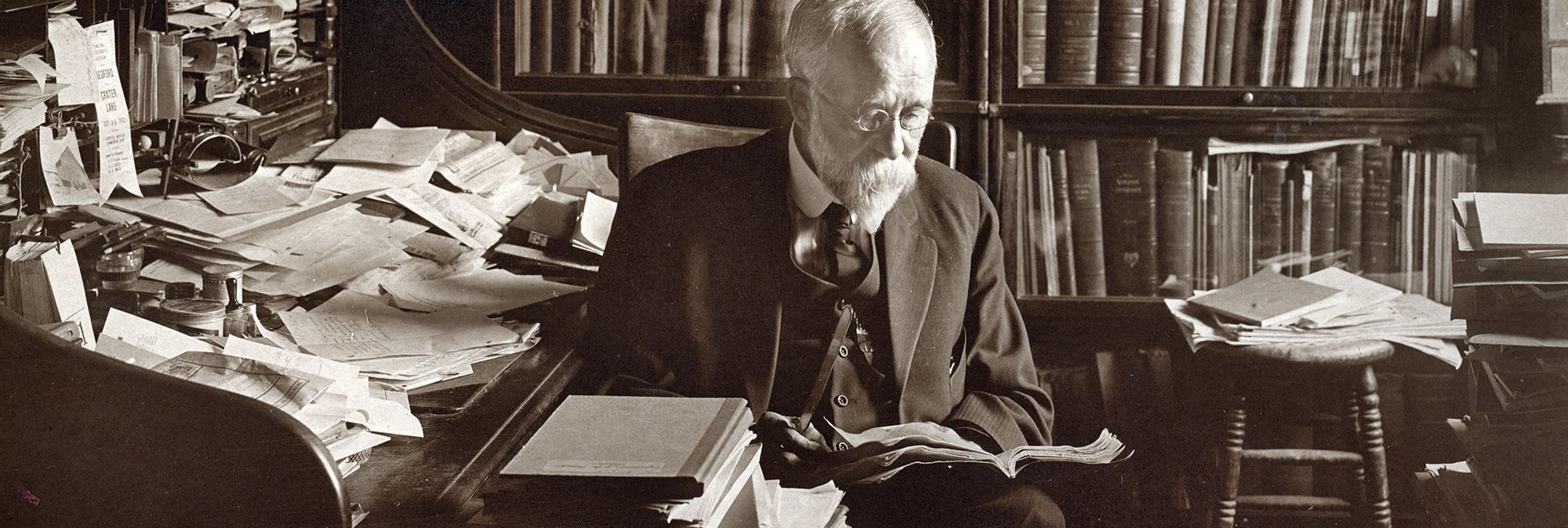
Science & Culture | Botany
About Charles E. Bessey
Dr. Charles Edwin Bessey, namesake of the herbarium, came to the University of Nebraska in l884 to be a professor of botany. The Ohio native studied at Michigan Agricultural College, Harvard, and Iowa State University. He was professor of botany at Iowa Agricultural College from l870-84. Bessey established a botanical laboratory at Iowa State University in 1873 when, according to Bessey, "botanical laboratories were unknown, even in the great universities of the country."
Dr. Bessey was made dean of the University of Nebraska Agricultural College, and became head dean in 1909. He served as interim chancellor of the University 1888-9l, 1899 and again in 1899. The college's enrollment and curriculum grew during Bessey's administration.
In l885 Bessey was appointed scientist of the State Board of Agriculture. His research and reports on plant life in Nebraska helped in the agricultural development of the state. He collected specimens of Nebraska's natural plants and grasses and arranged for their exhibit at the state fair. During the Bessey era (1886-1915) Nebraska developed an extraordinary program in botany, ranking among the top five schools in the United States for the number of its undergraduates who became famous botanists.
Bessey's successful tree planting experiment in Holt County on land furnished by Lawrence Bruner in 1891 led to the establishment of forest reservations in Thomas and Cherry Counties in l902. The Nebraska National Forest became the first man-made national forest in the world.
Bessey was elected to the board of managers of the national Wild Flower Preservation Society in 1902. Greater public awareness of this group, which Bessey encouraged, helped prevent the destruction of wild flowers. Shortly afterwards Bessey was asked by the Outdoor Art League of California to support their efforts in preserving sequoia trees in Calaveras and Tuolumne counties of California. As committee chairman of a botany section of the American Association for Advancement of Science, Bessey recommended that all botanists support federal legislation preserving the giant trees. His influence helped lead to state and federal protection of the Calaveras sequoia trees.
Dr. Bessey held offices in many state and national societies devoted to agriculture and science. He served as president of the Botanical Society of America, 1895-96, and president of the American Association for the Advancement of Science, 1910-12. He was the author of many reports and textbooks on botany. His best known book was Essentials of Botany, published in 1884. In 1914, Bessey and his son Ernst A. Bessey rewrote the book and retitled it The Essentials of College Botany. From l899-l9l5 Dr. Bessey was editor of Science magazine.
Dr. Bessey died in Lincoln, Nebraska, on February 26, 19l5. In 1918 he was named to the Nebraska Hall of Agricultural Achievement.





